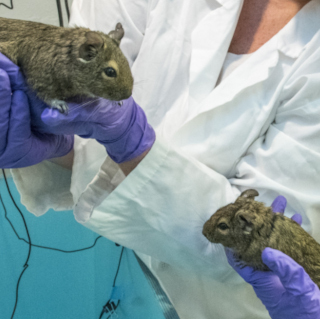Rodent Brain Perfusion
Last Review Date: August 26, 2020
I. Purpose/Scope
The purpose of the Standard Operating Procedure (SPS) is to outline the proper methodology to perform rodent brain perfusion.
II. Policy
It is LAR policy to meet or exceed all federal, state, and local regulations and guidelines and to comply with all institutional policies and procedures as they apply to the use of animals in research. Personnel must attend any applicable training in animal care and use, occupational health and safety, equipment operation, and SOPs prior to performing activities outlined in this SOP or work under the direct supervision of trained personnel.
III. Procedure
Perfusion is considered the means of euthanasia when an animal is anesthetized for immediate perfusion that results in death. Transcardial perfusion to replace the blood in the rodent brain with saline solution is used to maximize the health of brain slices by minimizing excitotoxicity and thereby improve experimental outcomes.
The researcher must record that the animal was adequately anesthetized before opening the body cavity for perfusion or before initiating percutaneous perfusion.
Perfusion Methodology
- The rodent will be anesthetized in a chemical fume hood using isoflurane with an open-drop method (see SOP for open-drop isoflurane technique) until unresponsive to tail/toe pinches.
- Once the rodent has reached a surgical plane of anesthesia, it is secured in the supine position (lying on the back with face upward) by carefully taping the front and hind paws to a dissection board inside the chemical fume hood.
- Kimwipes or other absorbent material is placed into a 15 ml - 50 ml Falcon tube, and 3 drops of isoflurane are added onto an absorbent medium (e.g., gauze, cotton ball).
- A diaphragm (made from a nitrile or latex glove and rubber band) is affixed to the opening of the Falcon tube, and a hole is cut in the center of the diaphragm large enough to place the rodent’s nose and mouth.
- The Falcon tube is then placed on the nose of the rodent to maintain anesthesia.
- An incision is made through the rodent skin with a scalpel along the thoracic midline from just beneath the xiphoid process to the clavicle.
- Two additional skin incisions are made from the xiphoid process along the base of the ventral ribcage laterally.
- The two flaps of skin are gently folded rostrally and laterally, making sure to expose the thoracic field completely.
- The cartilage of the xiphoid process is grasped with blunt forceps and raised slightly to insert pointed scissors. The thoracic musculature and ribcage are cut between the breastbone and medial rib insertion points, and the incision is extended rostrally to the level of the clavicles.
- The diaphragm is separated from the chest wall on both sides with scissor cuts.
- The reflected ribcage is pinned laterally to expose the heart (and other thoracic organs).
- The pericardial sac is gently torn with blunt forceps.
- The beating heart is loosely secured with blunt forceps (do not clamp), and a small incision is made in the left ventricle using iris scissors.
- A 15-gauge blunt- or olive-tipped perfusion needle is passed through the cut ventricle into the ascending aorta.
- An incision is made in the right atrium using iris scissors to create as large an outlet as possible without damaging the descending aorta.
- Perfusion with the saline solution is initiated and continued until the fluid exiting the right atrium is entirely clear.
- Finally, the rodent brain is dissected from the cranium and submerged in
ice-cold saline solution.
Note: For illustrations and additional instructions and techniques, see J Vis Exp. 2012; (65):
3564. Whole Animal Perfusion Fixation for Rodents. Gage, Kipke, and Shain.
